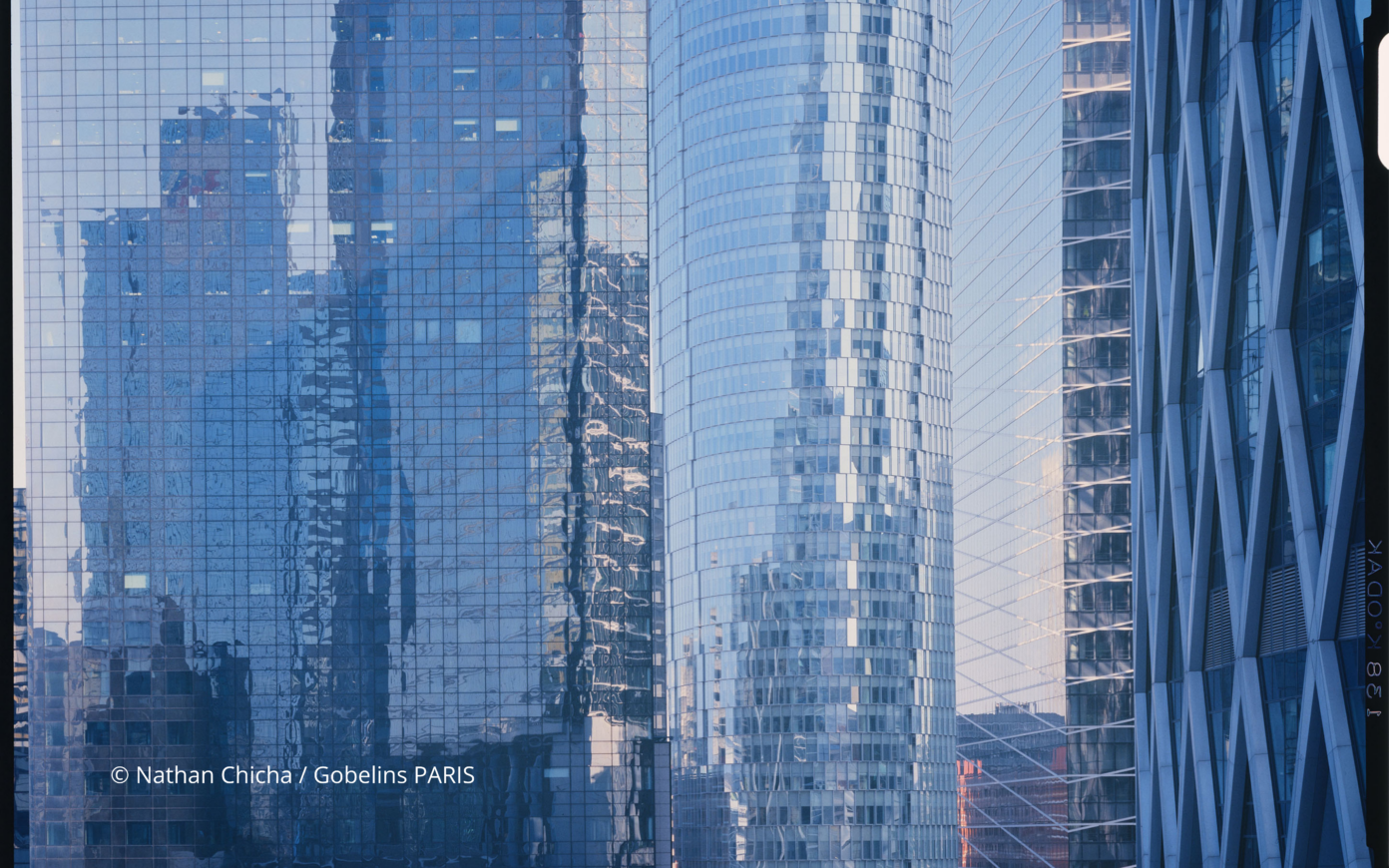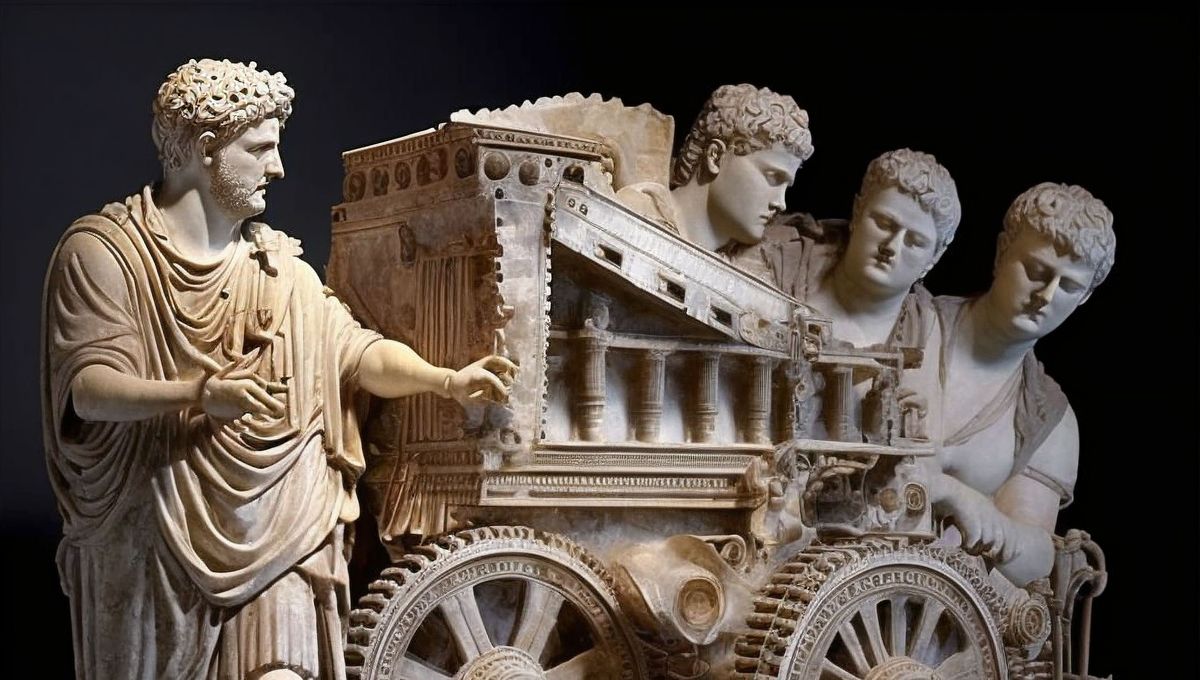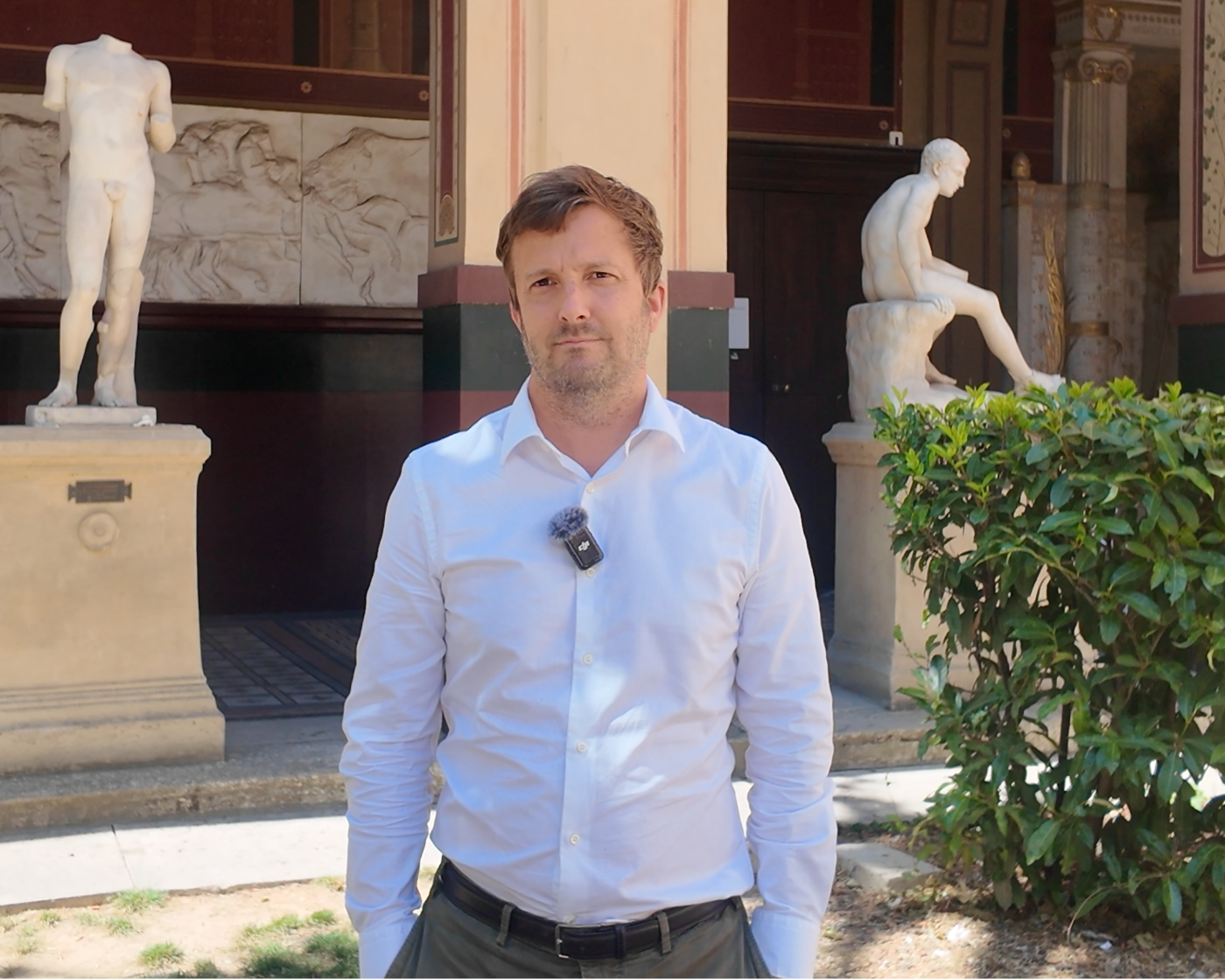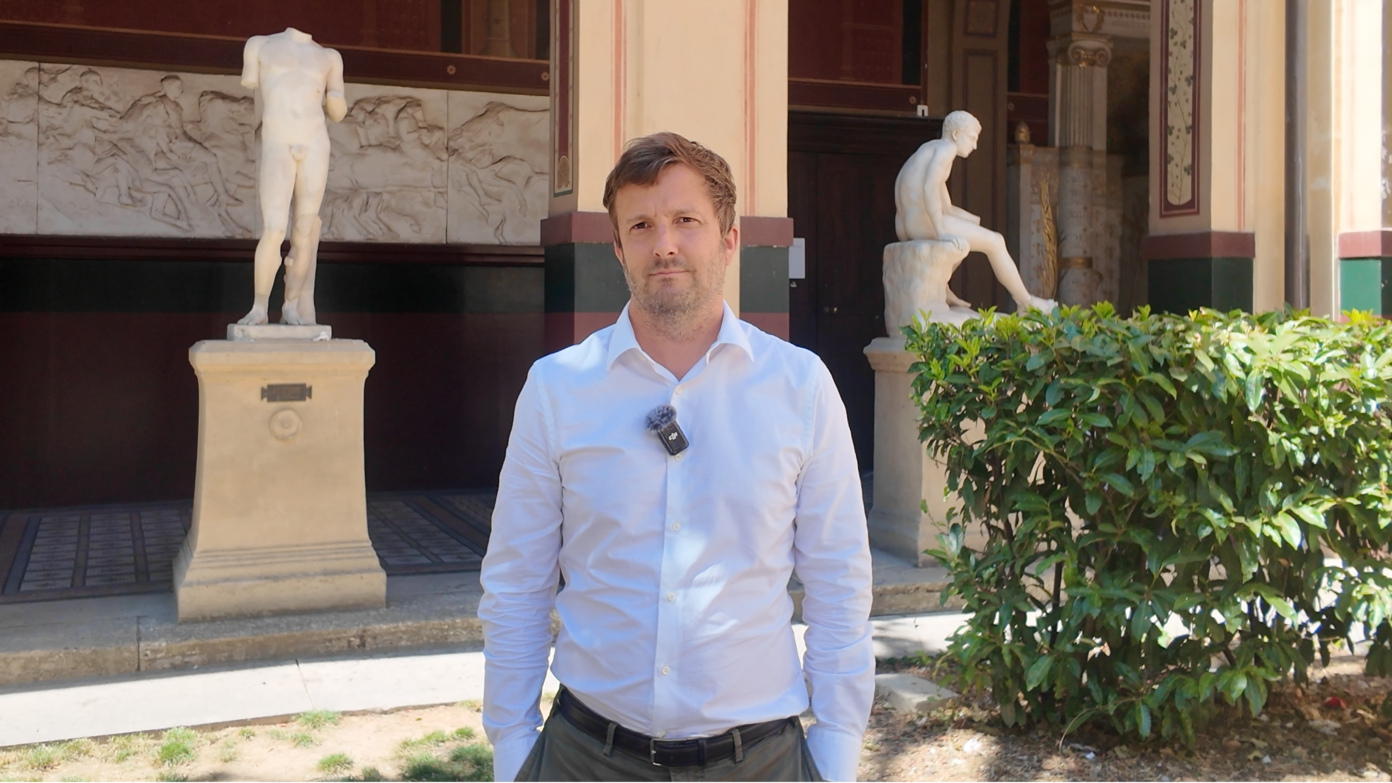Complexity, multiplicity, and adapatation within ecosystems
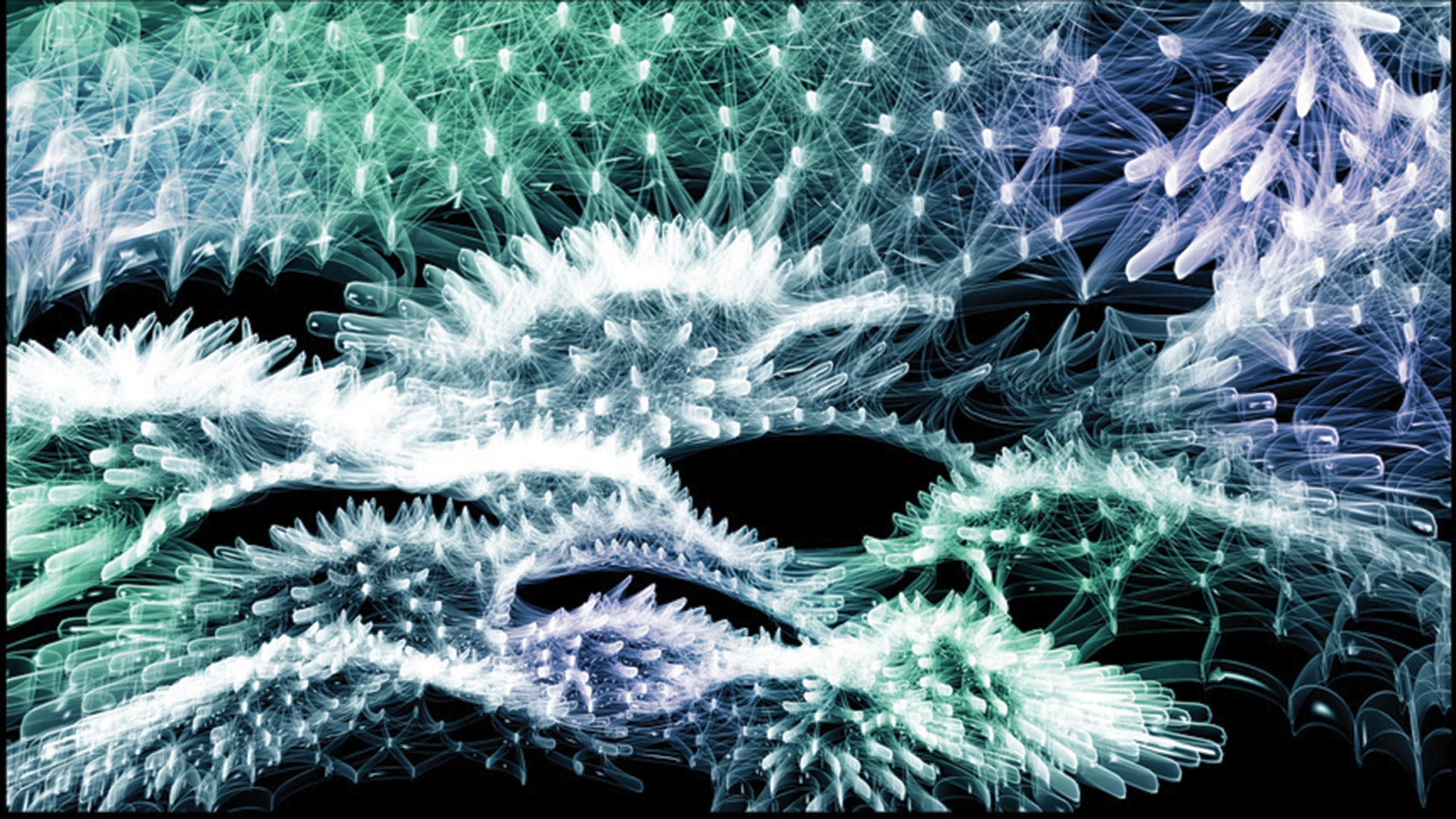
- Publish On 19 April 2017
- Alisa Andrasek
- 13 minutes
Contemporary architectural research is often fascinated by biological life but with an approach that goes beyond simple organic metaphors thanks to recent technological developments. Alisa Andrasek discusses the link between biology and her architectural practice, and her interest in the distribution of information in natural processes—a complexity that she tries to approach via big data. Her work in computational design is influenced by the convergence between information and materials, in an increasingly complex and open synthesis which enables it to go beyond the production of form and address the dynamic processes of matter itself.
Alisa Andrasek is an architect, director and founder of the Biothing laboratory. She teaches at the Architectural Association of London.
Stream : As often in History, we feel that we are living in a new era. But what would be the major changes that suggest that yes, we live in a real anthropological rupture”?
Alisa Andrasek: The idea of anthropological rupture is an incredibly large philosophical question and I think the symptoms of it are everywhere. The ideas of singularity and similarity are emerging. I’ve been trying to think about how to focus this question in my work.
I have curated a series of symposiums in Croatia where we would invite different thinkers from architecture and beyond to question the idea of the natural, as the old model of nature as something that needs to be preserved and be put under a glass dome is not valid anymore. This idea of what is natural is very questionable these days, because there are all these hybrids between so-called nature proper and so-called artifice. If you go to the Amazon, you will still find certain substances in the air that you would say are not quite natural, but if you removed them from the air, local plants that already mutated to adapt to these substances would probably die because they are already very much in a hybrid condition (see Slavoj Zizek on this). In architecture someone like Keller Easterling is good at tracking these complex contingencies or ecologies (she also participated in Proto/e/co/logics 2).
The understanding of nature as a large ecology and how we can approach the concept of a designer’s nature, a synthetic ecology, is something that I’ve been working on in my academic research as well. This idea of synthetic ecology binds different agencies, as a more complex idea of distributed agency and open synthesis, which appears frequently in current thinking, science, and philosophy.
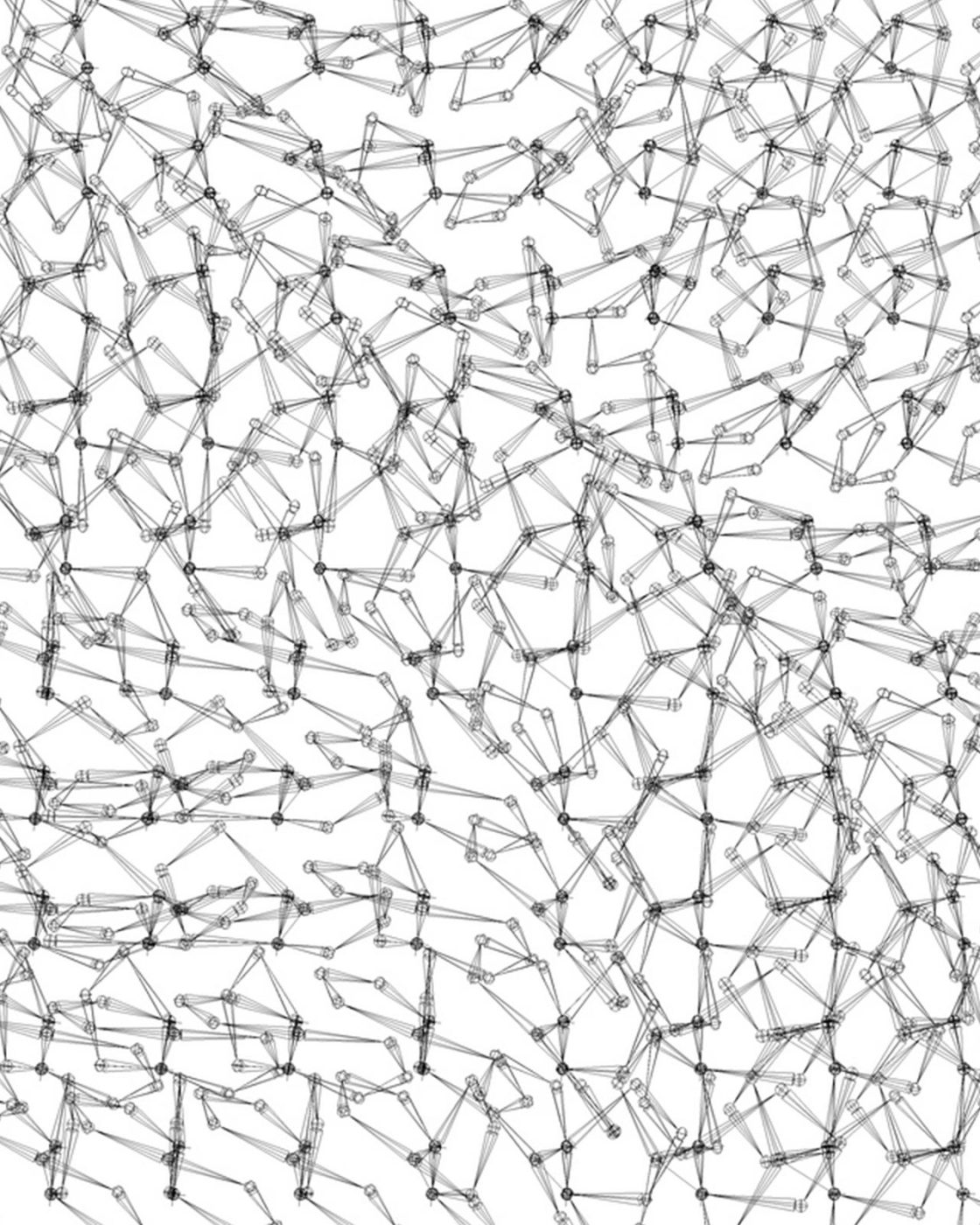
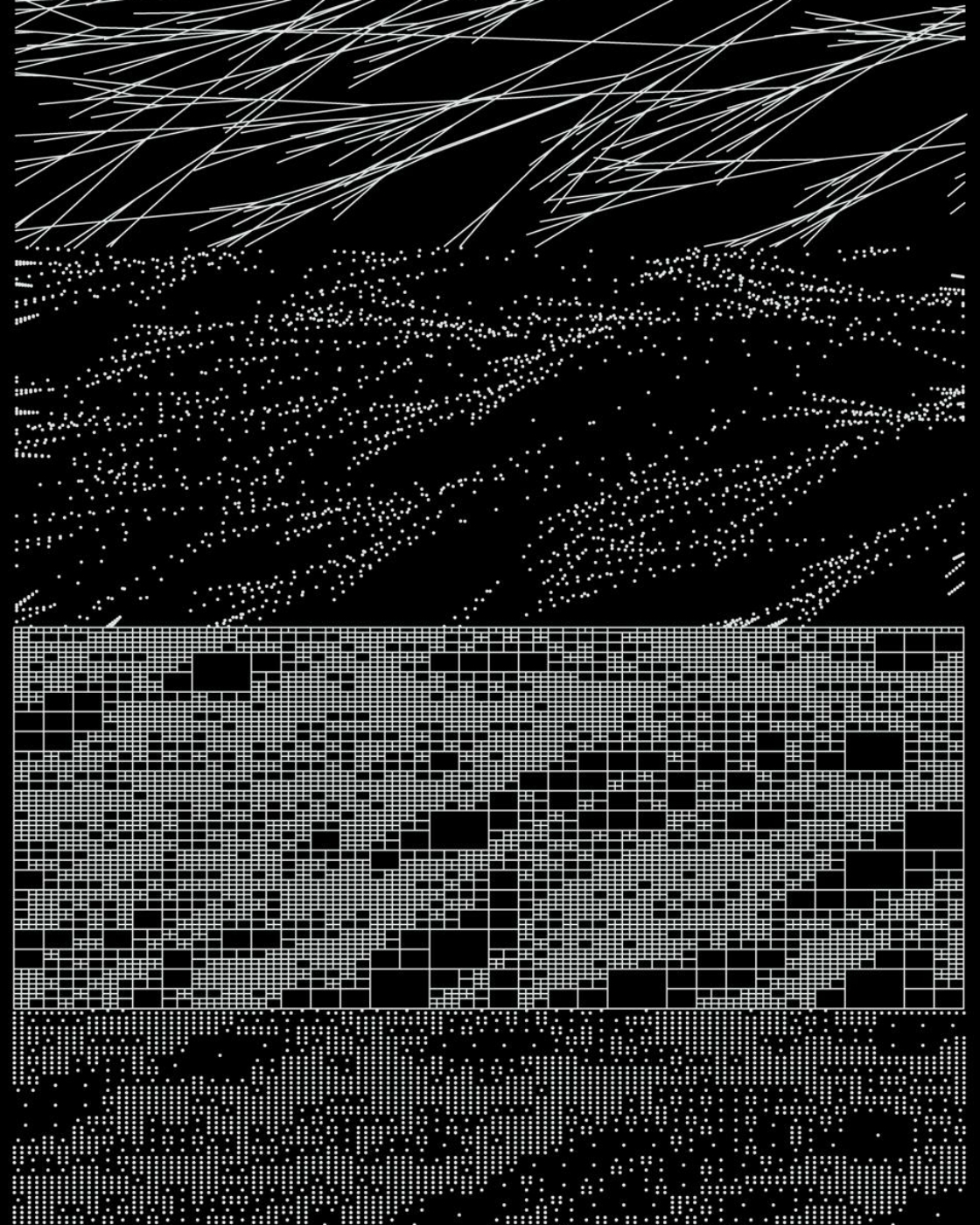
Distributed agency
Then there is the idea of agency within creativity and production. When I lecture I often get asked a question which is almost an intuitive, fear-driven response to technology. People that have not worked hands-on with some of these new tools and new computational resources wonder who the author is, whether we are loosing human authorship? This relates to the issue of distributed agency: in fact, the way we work with computation accelerates design intent and decision-making within design. When you’re working with computation of course there is a distributed agency between you and the things that you’re working with. I feel I’m making even more design decisions or have to embed more design intent to engage with this complexity or abstraction, because it’s so vast and non-human and has different orders of scale. So, although it’s a hybrid, I feel that human agency is anything but diminished. In some ways, it is amplified and accelerated.
Computational backbone has been my main resource and focus, because I decided very early on that within more general conditions of convergence of matter and information, I would focus more on the information end of the equation which is more malleable and easier to tap into. It allows engagement with the resistance of the material world, the slowness of architecture, that is always running against the grain of matter and rigidified protocols of various kinds. If we hack into the grain of matter and existing and upcoming protocols of production, we can perhaps accelerate architectural invention and mine it for novel aesthetics and performances. I call this increased resolution the fabric of architecture.
Material and substance merged
Stream : You mentioned the convergence between information and matter. Can you explain this further?
Alisa Andrasek: There are many examples of this. For instance using large data to decode certain aspects of life processes, such as the biologist Craig Venter’s work on sampling a genome of life in the ocean. In the case of the Large Hadron Collider at CERN there are these particle collision events that produce vast volumes of data but they are at a scale that humans can only access through a thick layer of abstraction. Large data is collected and algorithms are written that can decode or visualize that data to find patterns in the sea of data. That’s how we acquire new knowledge. There is no longer this parochial view that you have to see something and experience it with your senses in order to gain knowledge about it (see Karl Popper on this). Similarly when we encode the constraints of production, for instance the degrees of freedom of a robotic axis movement, and hybridize it with the algorithmic layer and get a designer to work within such a thick information space, you get new kinds of material expressions and performances that you were not able to get before just by working more deterministically, representationally.
Recently in our work we have had access to computational physics at a micro scale for different materials and production sequences. Which means we are not only dealing with production of some formal aspects, geometries, and linear physics, but we can explicitly engage in the dynamic processes of matter itself. On a very fine scale, too, because we can simulate the sedimentation of a river or collect the data of such a found system and feed it directly into the design process. The boundary between material and information is drifting, it’s kind of a complex and increasingly open synthesis.
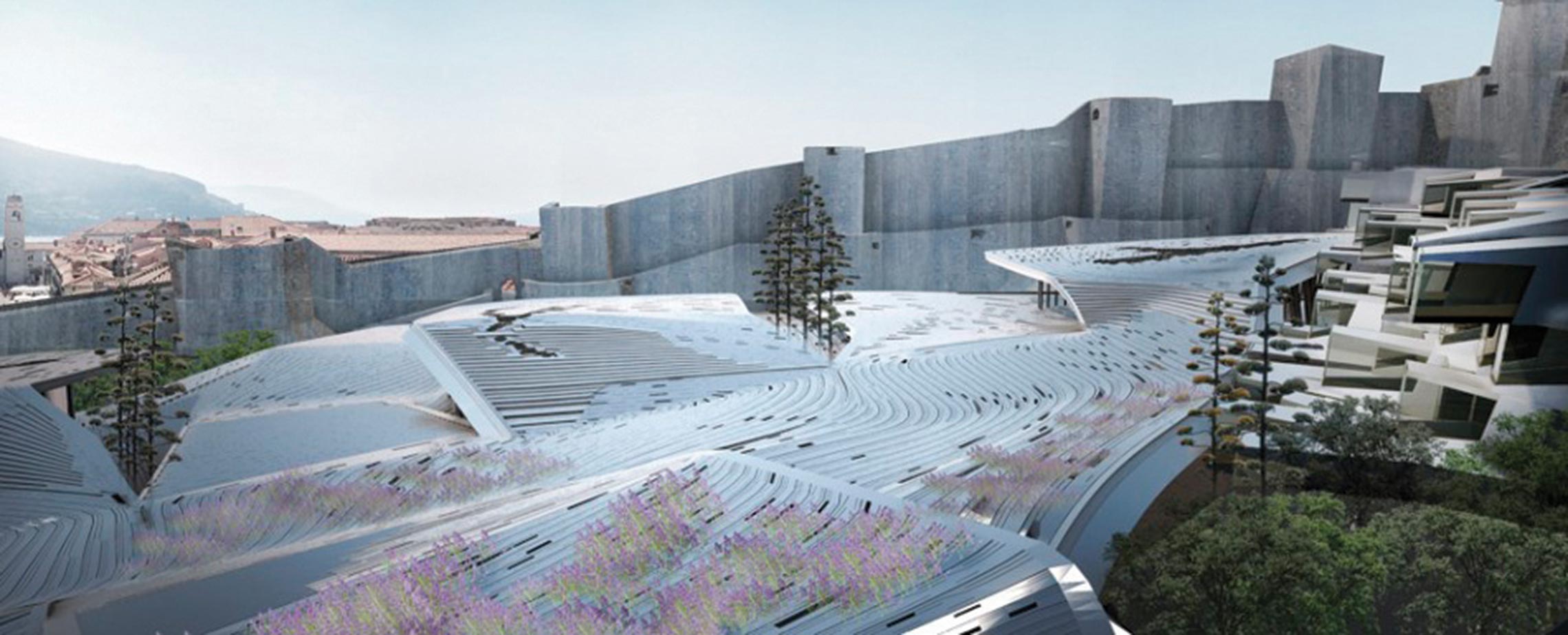
Stream : Back in the beginning of the 2000s, I was seeing the computational architecture coming out of ArchiLab. The work based on this new technology had the capacity to invent and produce new forms, but the relationship with nature was not really as present as it is today. As I understand it, the fact that the power of computing has been increasing so much makes it physically, technically possible to model some natural processes. What happened in the past ten or thirty years to bring about this very strong awareness of ecological problems? Is there something new in this approach?
Alisa Andrasek: Clearly increasing ecological pressures are the elephant in the room of architecture and beyond and they have never been successfully covered. The superpower of architecture has always been (creative) synthesis. Recently this has been radically accelerated, especially with the increase and evolution in computational resources. In my work with computation, in 2001, I was doing parametric design, and now it has become mainstream. It was based on taking small populations of maybe two or three hundred components in a wall or a facade and differentiating them through very simple linear gradients. That was what was possible at that time with the computational power and certain architectural ideas. Then a few years later we started working with object-oriented programming (OOP) which offers a different way of structuring information. In a way, this is actually one of our links to biology because people sometimes think our work mimics nature (my lab, Biothing, is automatically related to the notion of biomimetics). It doesn’t. It’s more about how information is distributed in some natural processes, especially complex processes of life, of biology. Information trickles locally via (often heterogeneous) neighborhoods rather than from the top, as a kind of linear function.
After that, in 2004 or 2005, we started working with the Processing open-source programming language which was structured on OOP, instead of Maya or Rhino. It was a lighter code, and computational power was also a bit larger. Suddenly we were working with populations of hundreds of thousands of agents allowing us to see different, fresh results. And then fast forward to today where, even on a simple laptop, we are working with computational physics and running simulations with populations reaching, say five billion particles. That again gives us a completely different access to engage with some of these issues of complexity and contingent systems (material and otherwise) head on. This has been my main motivation all along. Not so much nature—I see the concept of nature as being a bit fetishized—but how we access complexity within increasingly complex building environments.
Towards synthetic ecologies
Stream : My question relates to the relationship with studying natural processes of growth, which you explain as a metaphorical process. This is a study of how things are creating themselves in a complex system. Is your interest in this driven by what can be seen as a rupture of our new relationship with nature? Maybe we have to find a closer relationship because we are not divided between objects or human beings, but rather thinking in a more hybrid condition.
Alisa Andrasek: Yes, in architecture the relationship to biology and nature is often handled in a rather metaphorical way. This is not necessarily bad since it can provide a useful shortcut to certain results. We are trying to address this question, of how we engage with complexity within ecologies of built environments, in an explicit way. In that sense, learning from the complexity of, rather than trying to mimic or depict nature, has been our approach. Also it doesn’t really make sense to recreate the forms of life that already exist, since it is already there and it is fantastic. Yet what can we learn from some of these systems and principles in relation to certain problems within design, architectural, or urban ecologies? How can we then instantiate some of these logics, processes, philosophies even, and then how can we transform even just one aspect of how things are usually done, in order to spawn a whole revolution in constructability or other aspects of architecture? In a way, that has been my approach to synthetic ecologies rather than engaging in biomimetics or how organic these things look. However, these outcomes often have forces distributed in a more complex way so they result in curves that people see as more “natural,” that’s not the primary goal. Although, I am very much interested in mining fresh aesthetics as well.
Stream : It has always been very clear to me in your work that it’s not about biomimetics but the process and of course you have to end up with form. In architecture that’s the challenge. We have to end with this fform. Yet that’s what you start with.
Alisa Andrasek: Yes, but it’s not necessarily the only result. I don’t think we only end up with form. Because if we look at the modes of production, which for me is sometimes even more important, they’re kind of set up in another period of time. Currently the industrial mode of production is still predominant, with lots of repetitive modular elements, parts that come together, etc. We also have a very large kind of monster that is the construction industry which is set in its ways. It’s a big economic machine, so how do we actually hack into that? My idea was always how to revolutionize constructability and manufacturing, or what can generally be called modes of production. Then certain languages or expressions and novel materialities emerge out of that. It’s more about redesigning the whole process, the whole ecology of design rather than just one object. That’s why our working with code also means that the code could perhaps be developed in a certain sequence in one project, and then be revived in another one in combination with other code streams. This has been a major interest of mine in terms of how we carry that intelligence forward, and not just create objects.
Macro-micro approach
Stream : In one of your recent projects, the Fissure Port master plan in Taiwan, I saw that you consider your work as being effective at the urban scale. Not only as an object, but the whole process of producing buildings and spaces. Tell me, are you implementing that knowledge on the scale of the urban space ?
Alisa Andrasek: The issue of scale is very important for me in so many ways, especially in terms of explicitly connecting different orders of scale. From material science to architecture, how can the micro affect the macro? Then we get to a very large order of scale, which is the infrastructural, with urban or landscape projects. Although I sometimes find real pleasure in designing small, purely aesthetic things, like jewelry, I feel that the my greatest contribution can be on a very large scale. This explains the obsessions in my academic work, and why I’m mostly working on these kinds of larger-scale ecologies. To give you an example, if I am working on redesigning a portion of a riverbank, how can I include natural processes that are very fine and small, like a sedimentation process in the river, into a very large design (several kilometers long) of a very large territory? For the first time in history, we as designers—in collaboration with other fields—have access to this kind of synthesis largely thanks to increased volumes of computation, so we can actually work at those scales and connect them explicitly, not just metaphorically.
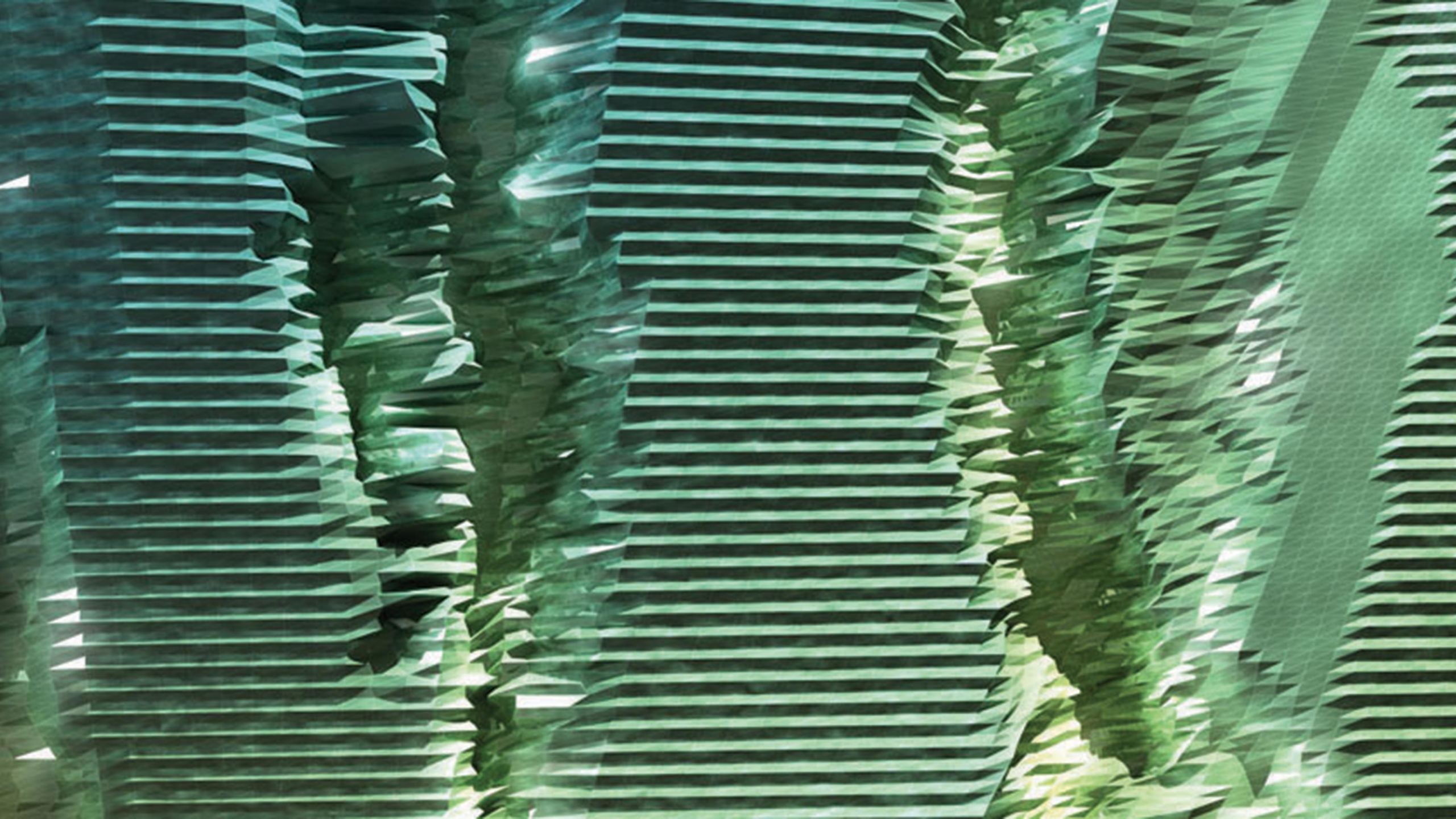
Stream : That’s really fascinating and it is at the core of what we’re exploring with this book. In which circumstances, and which field can you implement your research at this scale? Is it with your academic research or with your agency that you have the opportunity to explore this process that require a lot of data and probably multidisciplinary approaches? Can you find situations where you can experiment with that?
Alisa Andrasek: For me, it cannot stay within the walls of academia because then it’s going to fail. My interest has always been in real applications. The problem of course is when something’s being done for the first time and there aren’t too many precedents out there. Most people don’t really believe that certain things are possible until they are done. In a way I’m trying to find possible points of entry. For that, we are talking to engineers about the large infrastructural projects that tend to be devoid of design, since they are always understood purely as engineering problems. Yet you see the beauty of sand dunes, for instance, and you know those were formed under much finer grain physics, pure physics of matter, rather than what contemporary engineering is still doing for the most part. We are also talking to scientists who are trying to figure out how to redesign rivers to make them healthier, remineralize them, to work with the dynamics of floods and similar phenomena. Take, for example, the Mississippi River, which has been destroyed in certain areas because of the large engineering projects of the twentieth century that did not take its complexity into account, such as the fine scale sedimentation that occurs in that river across a huge territory. If you place static low-res structures in the path of massive high-res dynamic forces, of course they are not compatible and will eventually collapse. The same with the Thames Barrier, Dubai’s artificial islands; I could go on and on. We put a lot of effort into trying to find opportunities to actually apply this in real world situations. But because this is such a non-standard approach, I guess it takes time to find its way. That’s definitely the goal though, getting this into applications at many different scales.
I firmly believe we can already do it now. It’s just that people are always afraid of change and capital is currently very short-term oriented. Transformations are slowly taking place and it won’t be possible to ignore it for much longer. We need some pilot projects, opportunities to prove how this works and when the first projects start showing up, then it will naturally expand.
Stream : Do you think big data is a new phenomenon that will be linked to your practice?
Alisa Andrasek: At the university we just started buying supercomputers. I keep complaining in every project that we still cannot compute enough, so parallel computing should help. If we are to truly embrace this idea of engaging with complex ecologies, synthetic ecologies, then we really need to engage with this large data as well, and with real data, not just metaphors. That is very tricky because working with large data, or even now with parallel computing, is very demanding because it’s an extremely abstracted process. You need to develop new skills and sensibilities as a designer and in fact design your own processes and shortcuts. Large data allows for more explicit processing of contingent systems with design and for the abstract algorithmic fabric to talk to things outside itself. In the past fifteen years or so we used algorithms more as a geometric decoration, or in some cases optimization, of some more conventional ways of working. Now this is changing, going deeper into matter, from micro to macro.
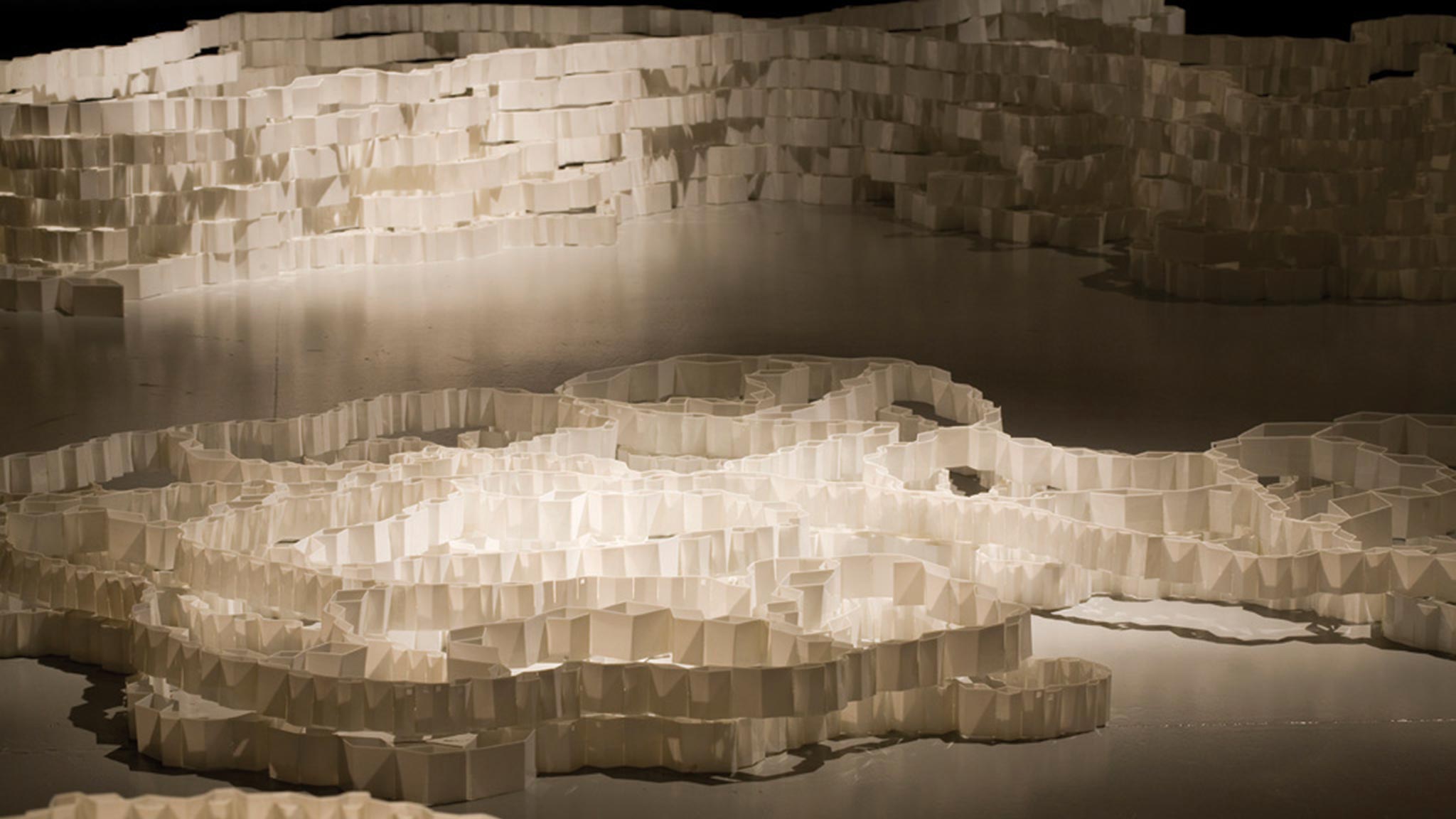
I think it’s also important to have pilot projects and opportunities. Within the walls of academia it’s really hard to advance this approach. With students we are doing all kinds of prototyping but the scale cannot match the real world. I hope we manage to convince some more progressive clients out there that even if it’s just one aspect of a project that advances through these new methods, it could potentially bring completely new types of effects to the world and, incrementally, we can help to evolve a field that I think is currently in crisis. (That’s another conversation altogether). I think that we are really behind the times in architecture.
My home is in proto-computational design thinking, but embracing contingency and noise. There is a certain part of the design practice that is rooted in creativity and bringing into the process more than just problem solving. I really believe in this kind of creative synthesis where we can now capture emergent phenomena within design work in quite a pure way. We can develop closer relationships to the conception of matter and physics and employ open forms of abstraction that go beyond limits of cognition, to really mine the possibilities of novel expression. There is a vast, new, uncharted territory opening up.
(This article was published in Stream 03 in 2014.)

